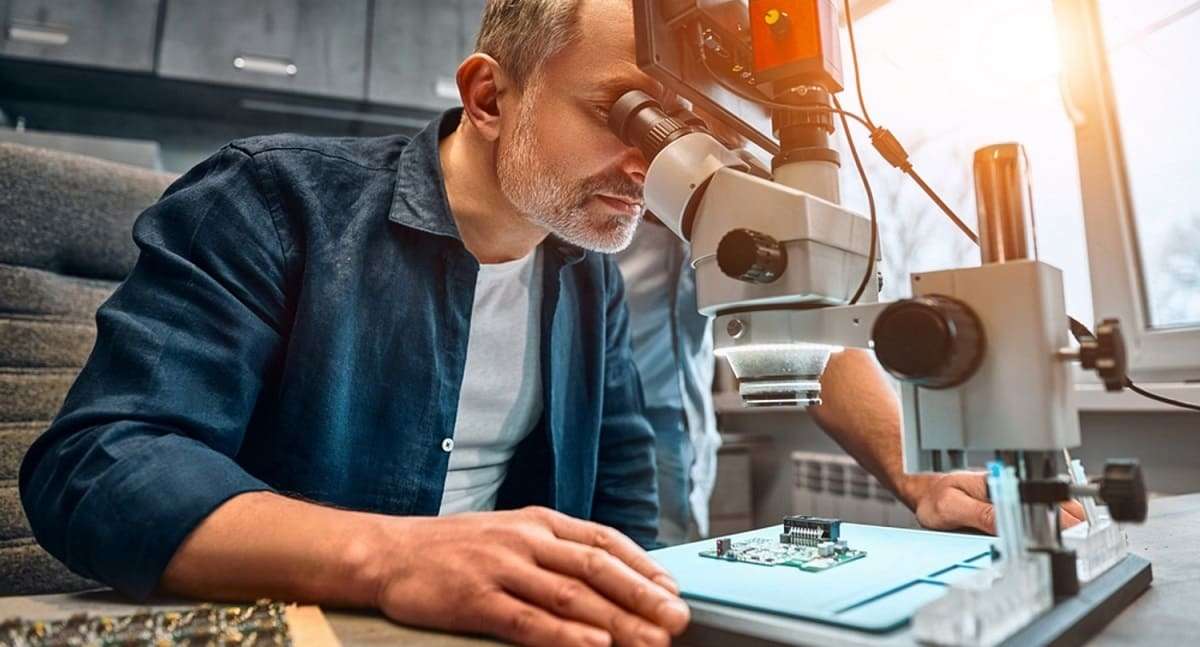Microscopes are essential tools in various fields of science, healthcare, and industry. They allow us to observe objects and phenomena that are too small to be seen with the naked eye, providing critical insights into the structure, function, and behavior of tiny entities.

The use of microscopes in laboratory products has revolutionized the way scientists and researchers conduct their experiments. The microscope is an essential tool in scientific research, allowing scientists to observe and study the smallest of particles that cannot be seen with the naked eye.
Microscopes have a wide range of applications in laboratories, from medical research to environmental studies. In the medical field, microscopes are used to study cells and tissues, diagnose diseases, and develop new treatments. In environmental studies, microscopes are used to study soil, water, and air samples to identify pollutants and their sources.
The development of new technologies has led to the creation of various types of microscopes, each with different magnifications and resolutions. For example, electron microscopes can magnify objects up to 500,000 times, allowing scientists to observe the smallest of particles. Confocal microscopes, on the other hand, can produce three-dimensional images of cells and tissues, providing a more detailed view of the sample.
The use of microscopes has also led to the development of new techniques and methods in scientific research. For example, immunofluorescence microscopy is used to study the localization of proteins in cells, while transmission electron microscopy is used to study the structure of viruses.
Here are some key uses of microscopes across different fields:
Biology and Medicine
- Cell Biology: Microscopes are used to study the structure and function of cells, including cell division, organelle function, and cellular interactions.
- Histology: Used to examine tissues and their structures, helping in the diagnosis of diseases based on tissue samples (biopsies).
- Microbiology: Essential for observing bacteria, viruses, fungi, and other microorganisms. This is crucial for understanding infectious diseases and developing treatments.
- Pathology: Microscopes are vital for examining tissue samples to diagnose diseases like cancer, based on cellular abnormalities.
- Genetics: Used in genetic research to study chromosomes, genes, and DNA structures.
Environmental Science
- Ecology: Microscopes help in studying microorganisms in soil, water, and air, which are critical for understanding ecosystem dynamics.
- Pollution Monitoring: Used to detect and analyze particulate matter and microorganisms in environmental samples to assess pollution levels.
Material Science
- Metallurgy: Microscopes are used to study the microstructure of metals and alloys, which helps in understanding properties like strength, hardness, and fatigue.
- Nanotechnology: Crucial for the visualization and manipulation of nanomaterials, which are essential for developing new materials with unique properties.
- Polymer Science: Used to study the microstructure of polymers, which impacts their mechanical and thermal properties.
Chemistry
- Crystallography: Microscopes are used to study the crystalline structure of materials, which is essential for understanding material properties and chemical bonding.
- Surface Science: Used to analyze surface properties and interactions at the microscopic level, which is important for catalysis and material coatings.
Forensic Science
- Crime Scene Investigation: Microscopes help forensic scientists analyze trace evidence such as hair, fibers, gunpowder residue, and biological samples.
- Document Examination: Used to study handwriting, ink, paper fibers, and other aspects of questioned documents.
Engineering
- Quality Control: Microscopes are used to inspect the surface finish and structural integrity of manufactured products, ensuring they meet quality standards.
- Failure Analysis: Help in identifying the causes of material failures by examining fractures, wear patterns, and other microscopic features.
Education
- Teaching: Microscopes are fundamental tools in biology, chemistry, and material science education, helping students understand complex concepts through direct observation.
- Research Training: Essential for training students and researchers in various scientific techniques and methodologies.
Pharmaceuticals
- Drug Development: Microscopes are used to study the interaction of drugs with cells and tissues, helping in the design of more effective pharmaceuticals.
- Quality Assurance: Ensuring the purity and consistency of pharmaceutical products by examining the microstructure of drug formulations.
Archaeology and Paleontology
- Artifact Analysis: Microscopes help in studying the microstructure of artifacts, which can reveal manufacturing techniques and usage.
- Fossil Examination: Used to study fossilized remains of microorganisms and small creatures, providing insights into ancient life and environments.
Botany
- Plant Morphology: Microscopes are used to study the structure of plant cells, tissues, and organs, which is essential for understanding plant physiology and development.
- Pollen Analysis: Used in the study of pollen grains, which can help in plant breeding and understanding plant reproduction.
Conclusion
Microscopes are versatile tools that play a crucial role in advancing knowledge and technology across numerous fields. Their ability to provide detailed insights at the microscopic level makes them indispensable for research, diagnostics, quality control, education, and many other applications.
The use of microscopes in laboratory products has revolutionized the way scientists and researchers conduct their experiments. With its wide range of applications and new technologies, the microscope has become an essential tool in scientific research.
